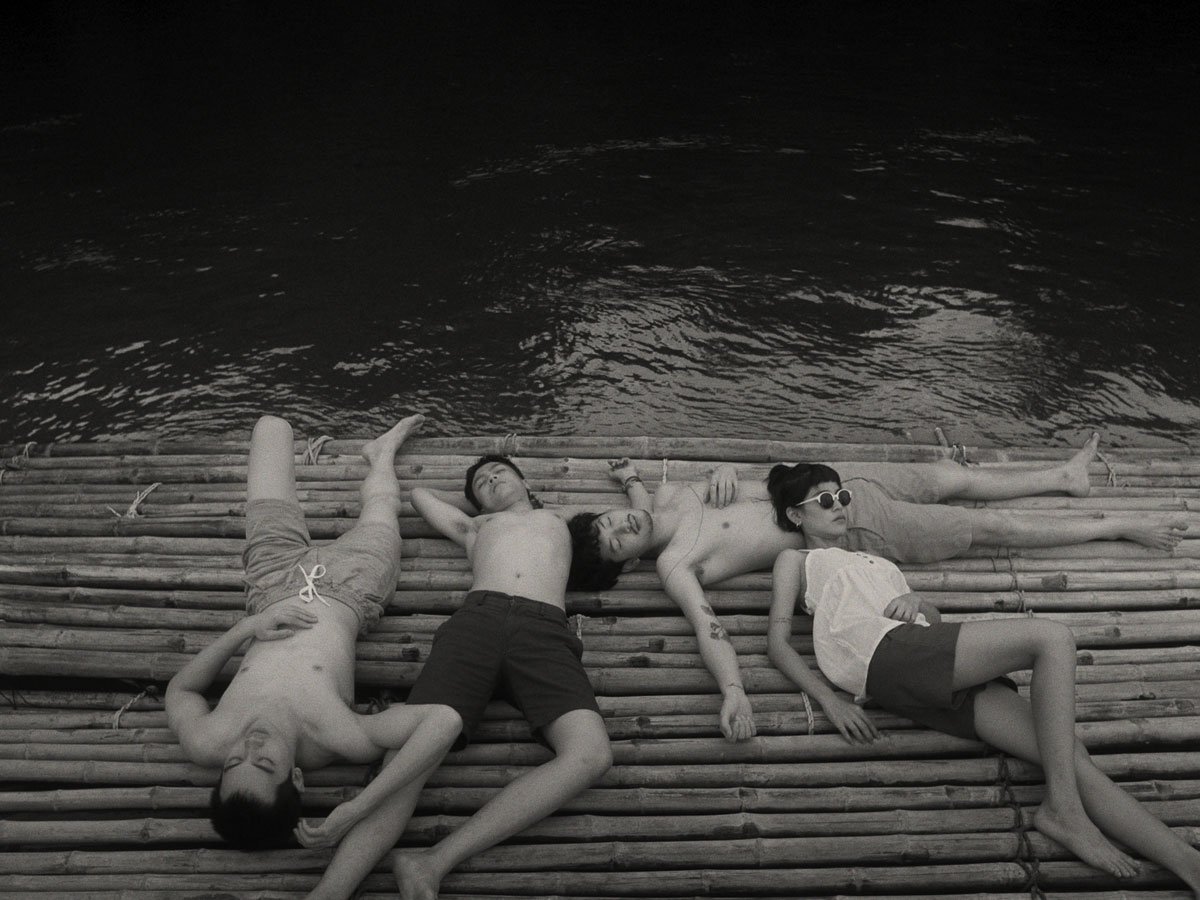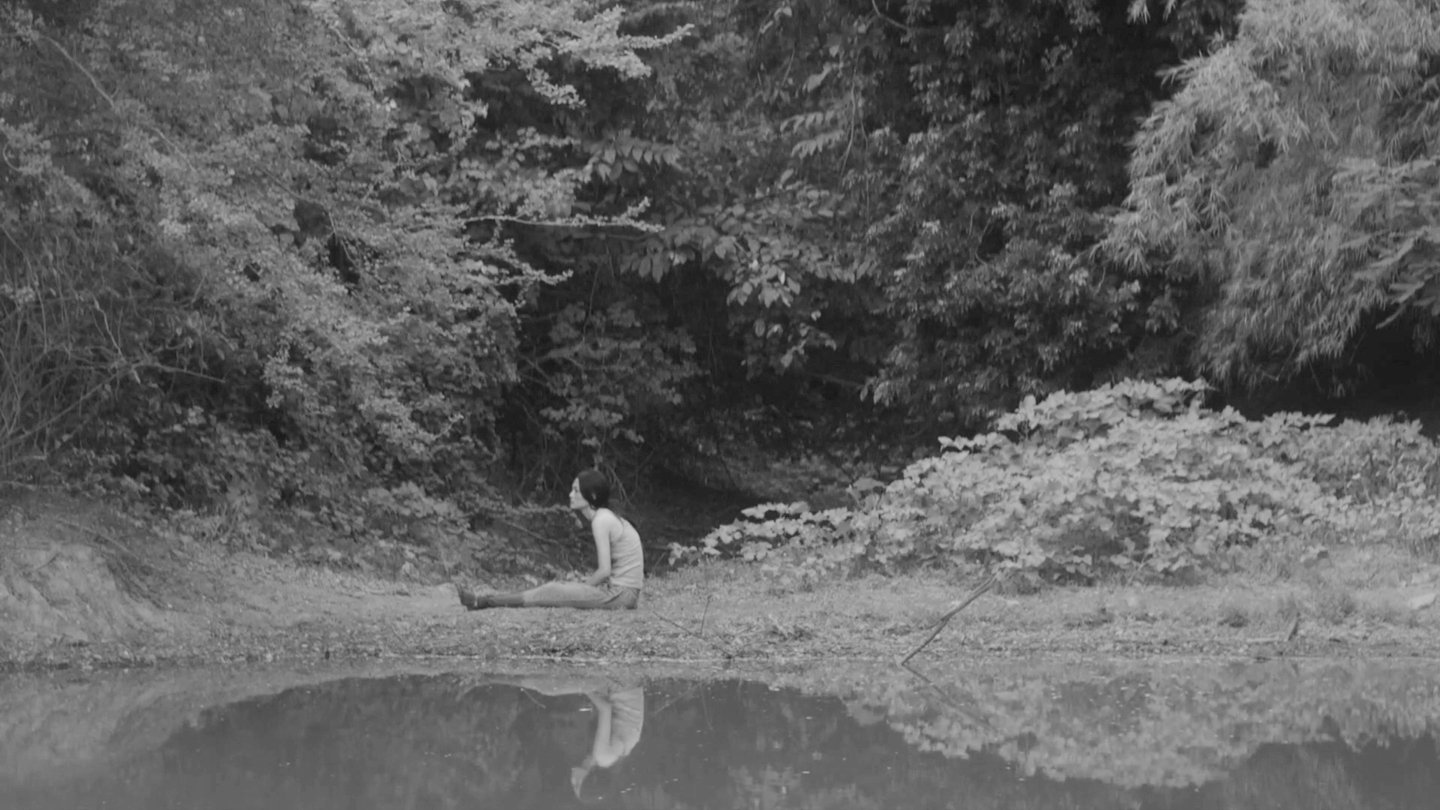Thai filmmaker Anocha Suwichakornpong talks about sound design, the patriarchy of the film industry, and connecting space with memory in her latest work, Come Here.
by Łukasz Mańkowski
Come Here (Anocha Suwichakornpong, 2021)
Since her 2009 debut Mundane History, Anocha Suwichakornpong has anchored her narratives around notions of identity and memory, on which she has reflected through tales of individuals navigating dreams, re-imagined stories, and traumatic pasts. One of the key elements of her work is deconstructing cinematic formulas – the film-within-the-film becomes a tool for both Anocha and her protagonists to negotiate collective memory, past and present. In her most recent film, Come Here, she reads significance into Thailand’s traumatic landscape and renders it through a meditative, audiovisual echo of the past.
On behalf of ALT/KINO, Lukasz Mankowski spoke with Suwichakornpong about Come Here and her desire to challenge cinematic convention.
ALT/KINO: The title of Come Here immediately conjures questions about space. The ‘here’ of the title seems to connect directly with notions of memory – remembering the space – but it also figures as a symbolic, politically driven nowhere. Where exactly is it that you bring your audiences with this film; that is to say, ‘here’ means where?
Anocha Suwichakornpong: I certainly agree with you that Come Here becomes an invitation or maybe even a provocation to reflect on space. In a sense ‘here’ is a non-place. There is, of course, a physical space where the film is set. The characters inhabit it, so the sense of space is built from the start – the place they go for their vacation is a very specific province in Thailand. At the same time, there’s this feeling of non-belonging. They are there, but only physically, for the duration of the film. The bigger questions might become – what is out there? That’s the other space we’re not certain of. For me, it would probably be Bangkok, but for others, it really depends. The ‘here’ will differ for everybody depending on when and where they watched the film.
A/K: You mentioned that the film may be a provocation. Why and who are you trying to provoke?
AS: The film is quite abstract. There’s no real gravity that exists in the realm of the film; you don’t know much about the place. You see it, you know it’s there, the characters talk about it, but it’s all very vague. It is through a visual language that I intended to make it clear that the place is important, but not through the narrative. I want my audience to respond with their curiosity. Maybe afterwards they will find out about the place on their own.
A/K: Even though your characters are young people mostly having fun throughout the film, there is a strong notion of belonging to the past, reworking through it, and in some sense re-enacting it as well. You connect with the past through images but also words. How did you work on the design of your characters?
AS: Every actor comes from a different background. I tried to come up with something that normally wouldn’t be possible – binding people that normally wouldn’t appear in the same project. There is one movie star, one stage actor, one amateur who has never played before Come Here, and some who already had some experience. That said, I wanted the audience to feel the diverse dynamics coming from the actors and I wanted the actors to be out of their comfort zone, as it is unusual for a movie star to act with non-professionals.
My initial intention was not to make a film where the dialogue matters - I didn’t even have a script! However, we spent a long time workshopping with the actors and eventually some of the lines that came up during these sessions made it to the final version of the film. In some sense, we extracted those lines in the course of becoming mutually attuned, so we didn’t even have to improvise anymore when we shot the real scenes. Like you said, the characters just go for their vacation and enjoy themselves, but among that, there’s this feeling of being disconnected from the place.
Come Here (Anocha Suwichakornpong, 2021)
A/K: Since you didn’t focus on dialogue, how did you approach the sound layer of words?
AS: I actually asked my sound designer, Ernst Karel, a sound anthropologist and artist, not to put too much emphasis on the dialogue so that they would be equal to the level of the ambient sound. As a result, the sound of the dialogue becomes much softer than in, for example, Hollywood films. When you see a Hollywood film, there’s often the case that the shot is wide and the character is small, but the sound becomes unnecessarily louder. That is not reality. I wanted to get a little bit closer to it, that’s why there are many scenes where you can barely hear the dialogues, for instance when my characters walk into the rocks and talk about the Death Railway. It was very challenging during the mix because, after all, you want your audience to be engaged in the narrative you are conveying. At some point, the process became about finding the balance – how much can you resign from the importance of the meaning of the words and lower the sound?
A/K: One of the elements that reappear in your work is the motive of deconstructing the film form. What are you looking for in this ongoing process?
AS: With By the Time It Gets Dark all I was trying to achieve was to negotiate the boundaries of cinema’s capability – to see what cinema can or cannot do. I was trying to push the limits of film as a visual medium. I was interested in the possibilities that the process of manipulating the image can bring to you. For instance, I was curious if cinema can really deal with trauma. With Come Here, I decided to take the next step and push the boundaries of image again, but this time with an emphasis on sound.
My initial idea about Come Here was that it should have been about sound. I can tell you, I don’t know if I succeeded but this is my struggle with cinema as a visual medium, as I simply cannot overcome this. So, the question became – how to make a film about sound? To give you an example, initially, I wanted to include a painting in Come Here, not to reflect on a particular representation or artist, but rather on the idea of painting as an act, a pictorial ground, and the capability of the medium. However, once you include a shot of a painting in the film, you can’t undo that representation. When the audience sees it, they will immediately think of the image and its meaning - and I didn’t want to talk about the painting, but the idea of a painting.
By The Time It Gets Dark (Anocha Suwichakornpong, 2016)
A/K: You’ve spoken previously about how Come Here is, for you, a film about being with the pain of the others. What kind of pain?
AS: I think that I tried to pose the question of whether or not one can really feel the pain of others through film. I question this through the characters that go on vacation but then visit a site of collective trauma. They have fun while being in a place where all these horrific things happened. When people encounter sites like that, some are moved, some are not. The reaction might come afterwards as well. I was intrigued, though, how you can render that feeling around trauma through space. Can that feeling be stimulated by the existence of the museum, or its instructions, or its history that the characters read about? I became strongly interested in the authenticity of experience – can you be the others? I myself was there, also having a vacation. Then it struck me and I felt utterly depressed for a while. I started to wonder where all these feelings started and what I could do with my experience of the site – would it be better to discard it, or replicate it? I guessed I wasn’t the only one who had such thoughts, so I lingered on them and rendered them through the film.
A/K: When you shot Come Here, Pom Bunsermvicha visited you on set and made a short film, Lemongrass Girl. How did that come about?
AS: Pom was an intern for one of my projects and I have known her for a while now. I’ve had this idea for a long time, as it’s still practiced on film sets in Thailand - it’s a really stupid superstition. It is believed that to prevent rain on some occasions (for example a film set or an event), a virgin, preferably the youngest in her family, has to plant some lemongrass in the ground. Somehow people still believe in it and it’s a thing. It has stuck with me, in a bad way, ever since Mundane History. I’d heard about the practice, but it was actually the first time I experienced it. I never expected that it could happen on my own set. I saw the lemongrass girl for the first time then and that image has stayed with me.
Aside from the superstition elements, there is a whole story behind it. On film sets, people often make fun of the lemongrass girls. If one fails and it rains, everybody will be like: ‘oh, so you’re not a virgin.’ If it doesn’t rain, they will keep doing it. You can’t win. But that’s part of a bigger issue of patriarchal culture in Thailand. I’ve waited a long time to make that project happen because I needed a film set. When I was going into the production phase of Come Here, I suggested to Pom that she come for my set and invited her to shoot the production, so Lemongrass Girl is actually a behind-the-scenes film with a critical perspective on patriarchy.
Anocha Suwichakornpong’s debut feature Mundane History screens as part of the Queer East Film Festival on 28 May.
Anocha Suwichakornpong is a filmmaker and producer. She is currently a visiting lecturer at the Department of Art, Film, and Visual Studies, Harvard University. Her work has screened in festivals such as Cannes, Locarno, Toronto, BFI London, Viennale, and Rotterdam.
Łukasz Mańkowski is a film critic, Japanese translator and festival programmer based in Warsaw, Poland. He's also an alumni of IFFR Young Critics and Berlinale Talents and a PhD candidate at Artes Liberales of University of Warsaw.



